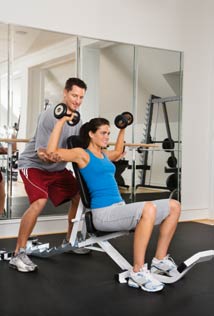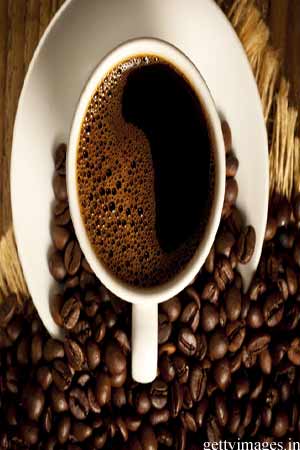28 weight loss tips with exercise

This article outlines 28 weight loss tips with exercise that you can use to achieve your weight loss goals with the help of physical exercise. The list is by no means complete but it covers several important areas in the weight loss process. It emphasizes the importance of exercise – and how to do it properly, and the role of proper diet and behaviour.
1. Benefits of Walking for weight loss
Exercise with walking is gentle but very effective, provided of course that you are walking vigorously and without any stop.
Benefits of walking
1. Burns calories and improves metabolism.
2. Helps strengthen the body, reduce local fat, restore the lose body areas.
3. Helps to strengthen the bones (something especially important for women).
4. Helps the circulatory system.
5. Reduces blood pressure and pulse when you are relaxed
6. Helps overcoming headaches.
7. Helps you stay calmer with less stress.
After a good walk you will feel better, more relaxed, less stressed and with less desire for food.
Walking can help weight loss
Walking can help you loose weight and not only that, it makes you feel less hungry and keeps the blood flow away from the digestive system. You can assume that you will burn up to 500 calories in an hour (depending on your step), which corresponds to a modest meal.
The main rules for enabling weight loss through walking are:
Start with small distances the first 5-6 days, walk a total of 15-20 minutes, but make a promise to your self to walk daily.
Gradually expand the distance, walking 10 more minutes every day, having the intention to walk for at least an hour.
Follow the same pattern with speed. The first day start with a slow but steady pace and as the days pass increases your pace.
Dressed comfortably and wear soft shoes.
Walk without tension, without tightening the body. Walk comfortably, not hunchbacked, do not pin your eyes on the ground. Walk vigorously, without stopping at every corner or shop you will meet. Do not hold anything in your hands.
When you first start walking you may feel stiff. This is natural because your muscles work. But if you have difficulties in breathing, or have tachycardia, reduce your step or stop to rest. Resume walking but at a slower pace and duration.
The ideal is to get to walk 5-6 kilometers in an hour.
2. You can exercise anywhere, any time
Do not avoid movement. The more you move the more weight you will lose.
Use the stairs and not the elevator
When you go shopping or on any job, do not take your car.
Use the bus. This will make you walk to the bus stop, when you go and when you return.
A good idea is to walk one or two stops and then take the bus, and then get off one or two stops before your final destination
3. Use more compound exercises
Choose compound exercises when exercising with weights, such as projections and squat with variations and pressure drills. Exercises involving the entire body, dumbbells or pulleys can stimulate the heart and respiratory activity to burn more calories and release more hormones that help burn fat and enable better body development.
Make your heart to pump and lungs to work during training with weights. If you breathe heavily and impulses of the heart are increased, then your body releases hormones that help weight loss and fat burn and also stimulate your metabolism.
4. Increase the density of exercise
Many people have heard about exercise intensity, but few know about density, which simply means to perform more work in less time. To achieve that, you can increase the density of the exercise by decreasing the rest interval between the sets when exercising with weights.
To speed up weight loss reduce the rest intervals to less than 60 seconds. Start with 45 seconds and end at around 20-30 seconds between sets.
Experiment with cyclical training: perform three, four or more exercises in a row without rest. Use more “super sets” (biceps, followed by triceps, followed by chest with back). Do abdominal and calves between exercises instead of relaxing.
5. Experiment with morning cardiovascular exercises
Do aerobic exercise early in the morning with an empty stomach (note: time is not critical, but will give you add extra advantage). If you are interested in maintaining a fat free body, you should eat a light protein meal (egg whites for example) or take a protein drink 20-30 minutes before the aerobic exercise.
6. Enrich your exercise program
Is the training you have been doing boring? Change the type of exercise, the program or the intensity. Try 20-30 minutes training with high intensity, alternating with 30-45 minutes of normal intensity. You can apply this to cycling or walking outside. Make kick boxing, then mountain biking in replacing the aerobic exercises. The combinations are endless. Do not limit yourself.
7. Sprint
Replace 1 or 2 aerobic training sessions with sprint. Run a level road or a hill or even on the track if you have access, instead of the traditional aerobic exercise. Beware that before you try this form of exercise you need to be in good shape and have the approval of a doctor.
8. Eat light at night.
Make your program so that the last meal of the day is 3 hours before sleep. If you eat something at night, keep the calories low; choose something light with more protein and carbohydrates rich in fiber with little fat.
9. Reduce carbohydrates gradually during the day
Do not eat starch carbohydrates after 3pm.
10. Reduce the consumption of carbohydrates
Keep carbohydrates low, approximately 25-30% of your total calories for 3 days (increase protein and good fats for compensation). At the 4th day consume high amount of carbohydrates.
11. Try to remove whole grain products from your diet
Some people have sensitivity to gluten contained in whole grain products, causing inflation by making weight loss difficult. Remove some starch foods from your diet and increase fat free protein and vegetables then may as well increase the weight loss.
12. Experiment by removing milk from your diet
Some people have lactose intolerance or are allergic to milk and not know it. Try to remove them from your daily diet and see the effect on your weight loss attempts.
13. Take into account the glycemic Index(GI)
The first criterion to choose carbohydrates is whether the carbohydrate is natural or not. However if you know you have intolerance to carbohydrates, then the glycemic Index is more important. For starch foods prefer sweet potatoes, brown or Basmati rice (not white or instant rice), beans, lentils, peas or barley.
14. Eat more low fat fruits
Some people completely cut fruit in a strict weigh loss diet. This may be good for short periods, but the fruits and vegetables have high nutritional value and should not be removed in most cases. Eat fruit but calculate the calories they contain and try to prefer fruits low in calories such as apples, grapefruit (some fruits like bananas have 120 calories, while an apple has 80 and the orange on average about 60 calories).
Avoid fruits with a lot of calories such as grapes. Avoid juice entirely because they are rich in calories and it is preferable to eat whole fruits to take and fiber.
15. Eat vegetables and fiber
Eat as many green and rich in fiber vegetables and salads. They have many benefits to offer to your health and diet.
16. Do not «drink» calories
No milk, no juice, no calories in liquid form. Drink lots of water and green tea.
17. Do not eat protein bars or nutritional bars
Some «nutritional bars» are made entirely from food ingredients and they are preferable than others. But all the protein bars are processed food. When it comes to weight loss you need to be strict in your diet, so get rid of the bars.
18. Make a break for 3 days
If you are feeling stressed and if you are on a weight loss diet and exercise without breaks for more than 3 to 4 months, relax for a while. Stop everything and relax. Leave the nervous and endocrine system to rest and prepare for the next stage.
Eat less during these days because your requirements for calories are lower, otherwise you can take more weight. After this break start the exercise again, fully relaxing and more stubborn.
19. Re-thing about your weight loss goals
Be specific and clear on what exactly you want. Not vague generalities such as «I want to lose weight». Write your goals on a piece of paper have it always with you. Twice a day, morning and evening, have a look at them and mentally envisioned yourself with the body you want to have. Feel how you would feel (emotionally) if you had already succeeded. Remember, if you have a negative image you will not be able to lose weight and you will end up sabotage yourself.
20. Drink more and more water
Water is vital for the proper functioning of the body. It is the most important element in our body. You need to try and drink at least 4 litres of water a day.
21. Increase the frequency of exercise
If you are exercising less than 6 times a week, then gradually increase the duration and frequency to 6 days. If you already do daily aerobics, increase the intensity and watch your diet.
22. Increase the intensity of exercise
Remember that you can increase the intensity of the exercise and burn more calories at the same time. Challenge yourself by noticing how many calories you can burn at the same time. Keep a personal record. Try to exercise with a partner so as to help and inspire each other. Make aerobic exercises more efficient, not only the training with weights. Look for new limits. Remember, your body can adapt to your needs.
23. Cut the alcohol
Do not drink any alcohol. Not even a beer or even a glass of red wine. Not even in controlled amounts. Even if this sounds impossible, it is a matter of principle and self-discipline as the program becomes progressively tighter.
24. Cut the junk food
If you have weight loss results on a weekly basis, then you can reward your self with a «free lunch» once or twice a week. But if you do not have results you should be stricter. Do not eat junk food because it will be harder to lose fat and weight. Leave the results to determine how strict your diet should be.
25. Make an overview of how you live your life
Look and analyse other areas of your life besides exercise and diet. Sleep, anxiety, recovery, alcohol, smoking, chemical products. You have anxiety and you cannot recover properly? Improve the quality and quantity of your sleep, reduce stress and look carefully if you are exercising too much and as a result you do not let your self to fully recover from your training.
Smoke? If so, consider that you may take some weight when you decide to stop, but you must get rid of this unhealthy habit! Put your life in order and do it now.
Analyse your diet more carefully. Block or reduce foods with added colours, flavours or preservatives. Cut alcohol and processed foods of any kind. Look for what is not natural and remove it from your diet. You can consume organic products. Keep your diet as clean as possible.
26. Medical advice
Last but not least, if all else fails, see your doctor for a medical check up. Make comprehensive blood tests, hormone tests, endocrine (for thyroid). If there are any problems follow the instructions and the treatment proposed by the doctor (natural or pharmaceutical).
You can get a second opinion if you are not given a physical therapy (the natural way is always the best and healthiest). If everything is normal, then start exercising immediately! The only thing that stops you is you yourself.
27. Set your pace
You may have managed to get half of a mountain path; you can temporarily stop to enjoy the view, preparing for the final climb to the top and continue to find your next goal. Keep in mind that it is normal to have peaks and back on your progress because this is how your body works and adapts.
28. Avoid food that has no nutritional value
There is food that contains a lot of calories, but with very low nutritional value. There are two major categories of nutrients:
Caloric substances: Carbohydrates, protein and fat. These substances contain calories and are necessary for the proper functioning of the body.
Non-caloric substances: This includes vitamins and minerals. There are also the antioxidant substances.
What type of food to avoid:
Fried potatoes, fried chicken (nuggets), crisps and other fried foods: A portion of chips from a fast food can reach up to 600 calories and 30 grams of fat. What does this mean? Many calories and little value.
Sweets, drinks with sugar and other sweet processed foods: A few sweets can contain 100-200 calories, additives and dyes, many calories (from sugar) and some trace elements.
Processed carbohydrates like crackers, biscuits, white rice and white bread: The processed carbohydrates contain some vitamin B complex, but nothing else.
In conclusion, the most important tip is to believe in the value and necessity of exercise for a successful weight loss. The weight loss tips with exercise presented above are just a guideline to help you create your own action plan for weight loss. The most important of all is to be able to change habits and include exercise in your daily schedule. Exercise is one of the most important factors for weight loss, especially for the long-term preservation of it.
Remember that it is not possible to lose weight without a negative energy balance, i.e. you must eat less and to “burn” the extra calories with exercise. It is necessary to make a commitment to your self and to others that you will be persistent in your effort, that you will insist on a daily basis to exercise and to follow your diet.
-
Experience Weight Loss Via Body Detoxification
There are numerous products for detoxifi
-
Effective and Proven Ways to Lose Body Fat
As we grow older, we tend to put on weig
-
New Study Reveals That Those Calorie Counts on Menus Aren’t Helping
You know those calorie c
-
Personal Training: 6 Secrets of Award Winning Customer Service
Would you believe that your ability to provide quality customer se
-
Weight Loss and Weight Control – Tips To Keep Pounds Off
What you must know to lose weight: Diets don’t work.
-
The Mayo Clinic Healthy Weight Pyramid A Way To Live Your Life
Usually it happens in the spring. Mayo Clinic phone operators are del
- DON'T MISS
- Do You Absolutely Want To Enlist In The 50 Million Pound Weight Loss Challenge?
- Weight Loss Spring Cleaning - Unhealthy Habits To Banish
- Is Hoodia Effective For Dieting
- How To Fight Back When Negative SelfTalk Rears Its Ugly Head
- 5 Fat Loss Eating Tips and Tricks
- Exercise And The South Beach
- How to Get Rid of Cellulite
- Get Serious To Lose Weight Really Fast To Avoid A Lower Social Status
- Weight Loss Tips for Obese People
- Weight Loss Pills For Losing Weight Effectively




